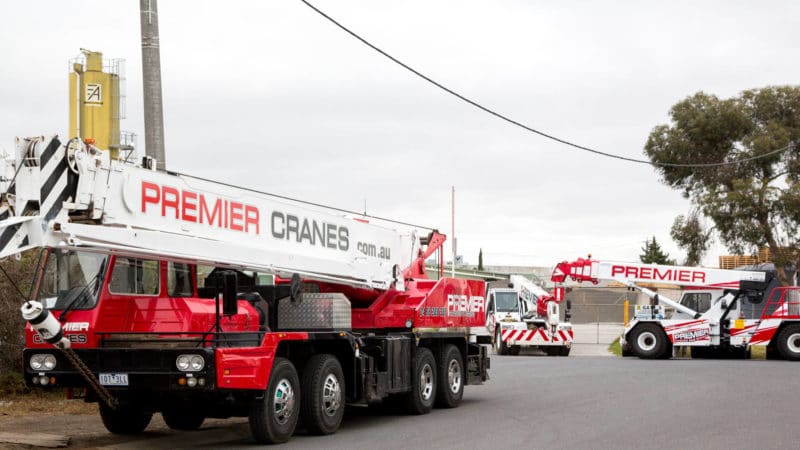Mobile Crane Stability

Balance, Leverage & Gravity Are Key Crane Stability Factors
Tipping accidents are the most common type of mobile crane and crane accidents generally for that matter. Balance, leverage and gravity are key factors in crane stability as well as any manufacturer’s guidelines and the tipping point of the crane itself. In this post we will discuss particular configurations which may lead to stability concerns.
Lifting on Rubber
When a mobile crane setup allows for a rubber lift in replacement of the traditional outrigger setup it’s critical to review the rubber lift load rating chart when using this configuration as it will be different.
If an operator elects to not have the outriggers extended and stability of the crane is minimised, the load lifting capacity of the crane is reduced. As a consequence, the overloading risk will have increased and the crane will be more prone to tipping over.
Side Lifting
Lifting over the side of a crane is the least stable way to perform a lift for most cranes. Ensuring that any telescopic boom crane truck boom has been extended to its required position, we recommend that the initial lifting position of the crane be set to the least stable location and commencing the lift from that point.
The benefit of this method of operation is that the operator can prevent any accidental overload issues occurring during the lift. Instead, any miscalculation of the load weight can be noticed immediately upon the commencement of the lift and corrected.
When commencing operation in other starting positions you risk causing serious damage and injury to others should the crane tip when passing over the least stable position of the crane.
Front or Rear Lifting
When the boom is positioned at the front of the crane the tipping axis is at the front set of outriggers. Alternatively, when lifting from the rear of the crane the tipping axis is at the rear set of outriggers. For cranes capable of front or rear load lifts it is imperative to refer to the manufacturers load lifting chart for whichever configuration that you elect to operate.
Boom Length
Boom length is one of the leading factors leading to a crane tipping. Understanding the required length of the boom for the lift is critical to safe performance of the mobile crane. It’s surprising how often it is assumed that the boom of the crane must be fully extended when a crane is in operation.
The reality is, the longer the boom is extended, the lower the load lifting capacity of the boom. Therefore it is critical that the operator understands how the boom length impacts the capacity for the load lift at hand.
Things To Remember
- Use a qualified crane operator
- Read the operating guidelines in the crane manufacturers manual
- Never lift loads where there is no rating provided
- Never lift loads greater than what is specified in the load chart
- Use outriggers wherever practicable
- Education, knowledge & experience is key
One final note and it goes without saying that this post is a guide and it’s important that any operator refer to the particular crane manual and load capacity guidelines prior to commencing any lift. Taking the time and effort to ensure that the crane has been properly set up, load weights are understood and using a proficient operator can be the difference between professionalism and fatalities.
Premier Cranes & Rigging are your mobile crane hire specialists, we understand our clients need the flexibility to engage our services anytime anywhere. Call Operations on 0488 388 588 anytime or contact us here and we will happily assist you with your requirements.